The January club landscape trip was a day out on the Essex coast.
Itinerary
There were three locations to visit:
1. Thorpe Bay, Southend-on-Sea
2. Shoeburyness Beach
3. Lion Creek
I’d never been to any of those and therefore was looking forward to visiting some different places.
Brutal early start
An extra early start was needed for this trip as it would be over 100 miles each way and 2.5 hours driving each way, therefore the rise and shine time was 4am!
To add to the challenge, the weather was very cold with freezing fog so I made sure I got an early night and had all my stuff ready to go.
Thorpe Bay, Southend-On-Sea
We met on the esplanade and wandered down to the beach where the tide was a long way out.
An impressive sight was in front of us as there were loads of boats on the sand, with their chains making great leading lines.
I really liked the first boat I saw with the buoy and two of us spent quite a bit of time here.
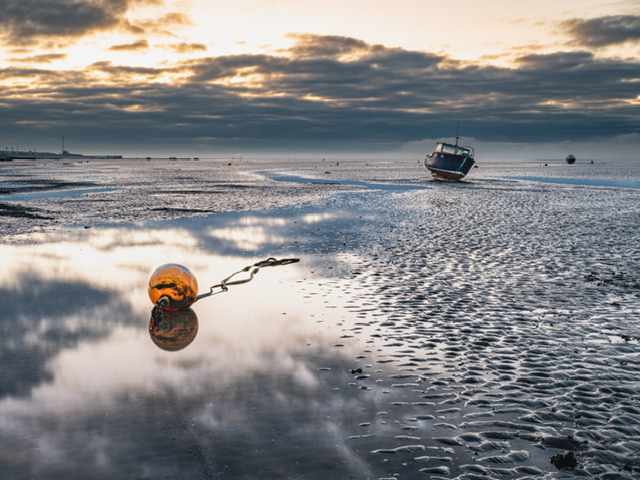
I did have some other shots of this scene, and this one may have a better leading line, but the one where the buoy is more prominent I like best.

Next up was a boat that appeared very popular with fellow club members, and with the chain making a great leading line, you can see why.
The next shot was a pleasant scene with the boat making for an excellent isolated subject.
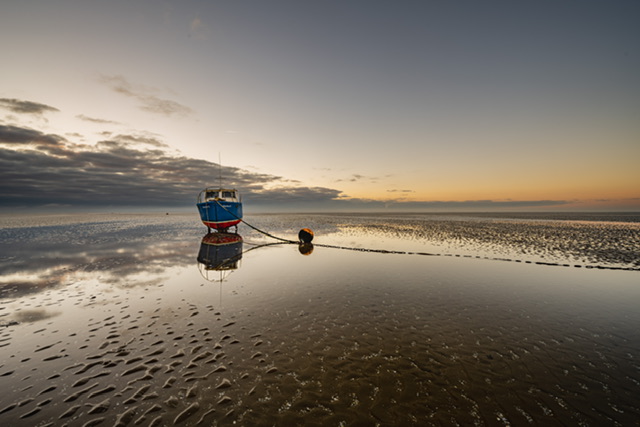
I took the shot below as I liked the isolation, shape and leading line of the rope.
I really like the next shot because the scene is nice with the reflection but I find the boat really interesting, for example, it has a solar panel on the roof.
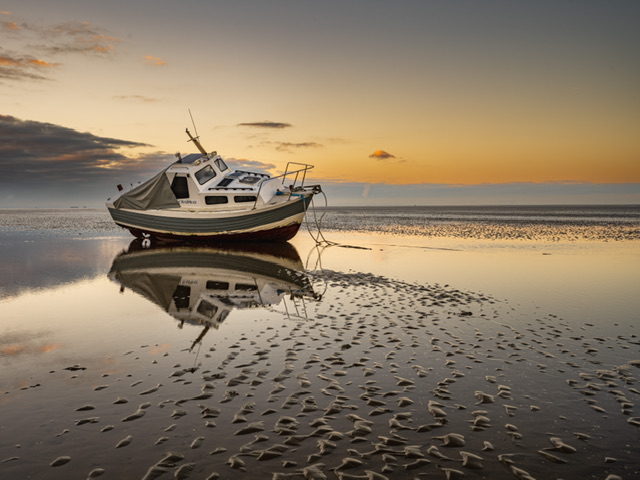
It’s also interesting that a fellow member felt the boat wasn’t worth a shot due to the canvas on the back, which didn’t bother me.
The next two shots are probably more average shots but worth a viewing.
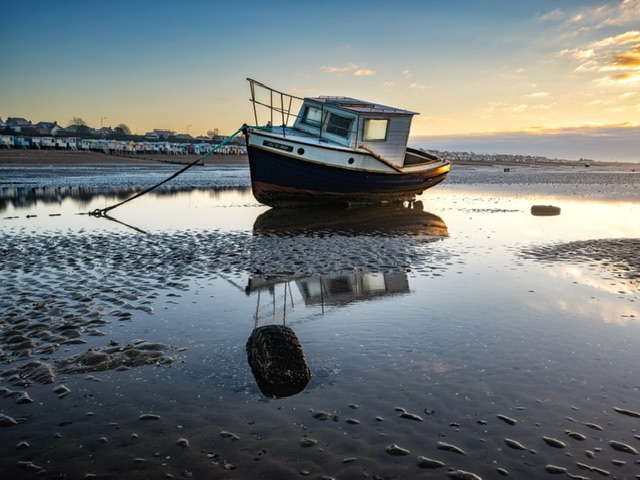
We spent over two hours here, and if it wasn’t for the tide coming in, I could’ve easily spent all day there.
Worth noting that the tide comes in very fast, literally in 10-15 minutes if that.
While the sunrise wasn’t epic thanks to lots of low level cloud, there was some warm colour to the sky, and some great shots were grabbed by all.
As we made our way back to the cars, I took some shots with my Fuji.
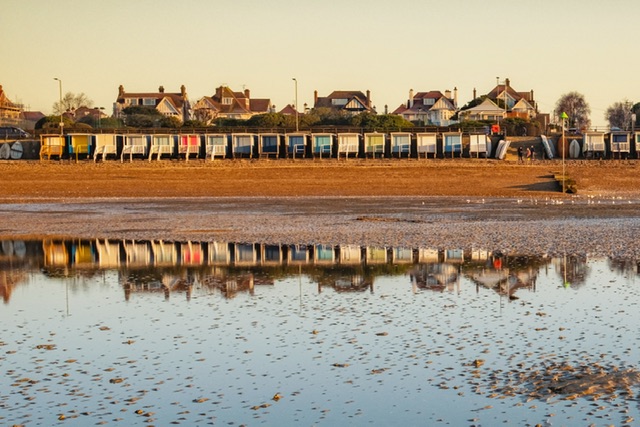
I really like the reflections of the beach huts in the water on the beach.
Shoeburyness beach
Next up was Shoeburyness with the aim of shooting the submarine boom. Since the tide hadn’t come in yet, we decided to look for a café for some breakfast.
A fabulous hearty cooked breakfast and a cup of builders was a great warm up as we returned back to the beach.
Submarine boom
The photo below shows the remains of the Cold War boom (left hand side). The structure on the right is an unrelated outfall pipe. Yes folks, where the you know what comes out!
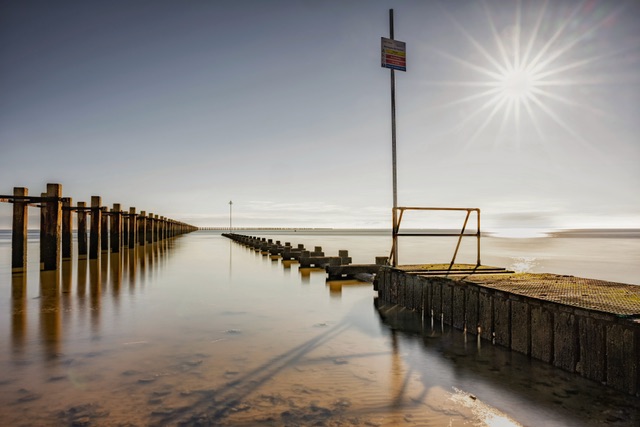
On the face of it, it’s great to get the sun star but the area of burnout on the horizon middle right lets the image down.
The replacement booms were built 15 to 60 m (16 to 65 yards) west of the old ones between 1950 and 1953 by labourers and servicemen for the Admiralty.
These comprised two offset rows of concrete piles, linked by angle-iron straps.
The northern boom had two changes of direction along its length before meeting the deep water channel.
In times of extreme alert the gap between the two was intended to be closed by moored Royal Navy vessels.
By its final year the nature of the threat was shifting from submarines to nuclear-armed bombers against which the boom would have been scant defence.
With the coming of reliable nuclear-armed rockets, jet-powered bombers and the hydrogen bomb in the mid-1950s the principle was beyond doubt obsolete. It is the only known anti-submarine boom of the Cold War.
Nowadays the boom is a focal point for visitors and photographers alike.
This next shot below in mono is probably my best one of this location.
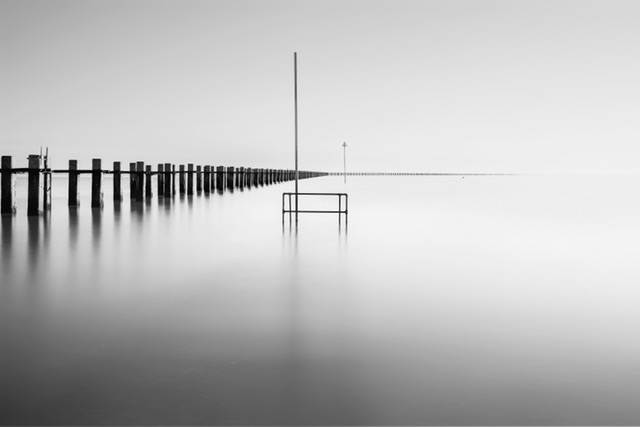
I found this location really challenging. I couldn’t really see a composition that I liked, the light was still harsh and it wasn’t inspiring me at all.
I once again got the Fuji out just to see if I could grab something
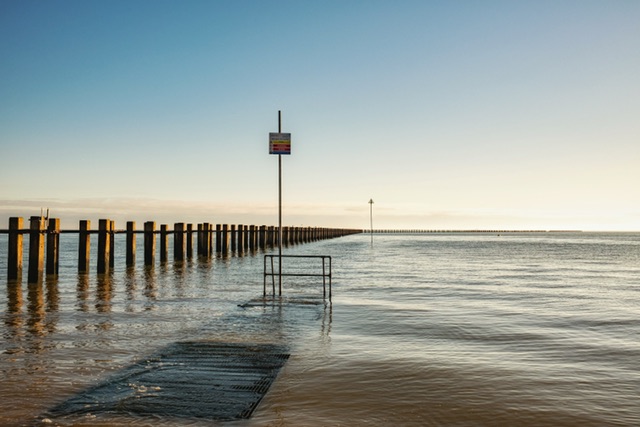
We finished our shoot and decided to move on to our third and final destination of Lion Creek.
Lion Creek
Lion Creek is part of a large nature reserve and has some interesting twisty marshes combined with some features that can make interesting compositions.
There are some remnants of one of the original decommissioned submarine boom that were dumped here following demolition after WWII.
There is also a derelict oyster shed which was our target to photography on arrival. Front on, the shed makes nice reflections in the marsh.
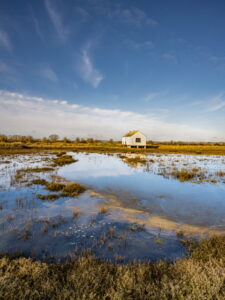
A zoomed in / cropped version shows more of the hut…
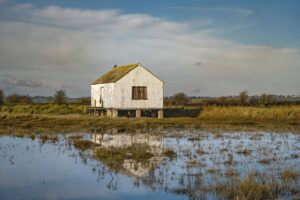
I had to grab a shot with the Fuji, as I had done at the last two locations…
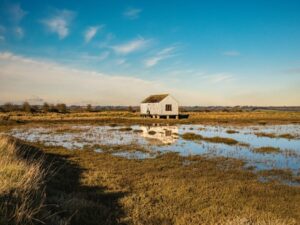
I followed the last member standing to the other side of the hut and got the shot below which I’m very pleased with, while I watched my fellow club member fly his drone.
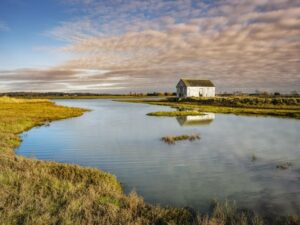
Following this final shoot, we packed up and headed back to the car.
Thoughts on the trip
Having a bag full of food in the car, I had a chocolate bar, cup of tea from the flask and a red bull to keep me alert for the 2.5 hours drive back.
This trip was really knackering but worth it. I really enjoyed the day out with the Southend beach being my favourite, and definitely one to come back to again in future.
Onwards and upwards…